Bathrooms closely follow after kitchen when it comes to places in your house that need minute attention to details, like layouts and finishes.
Since the 1950s, the size of an average US home has doubled and as they grow, so do the number and size of their bathrooms.
The larger the bathroom, the more fun it is to decorate.
However, even if you have smaller bathroom, it does not limit the quality of the design.
On the contrary, you can use premium fixtures and finishing in your bathroom as they will cost you less in contrast to a larger bathroom.
Learning a few key dimension and layout of your bathroom size can inspire you to turn these intimate spaces into unique and beautiful rooms.
Table of Contents
What Is The Average Bathroom Size?
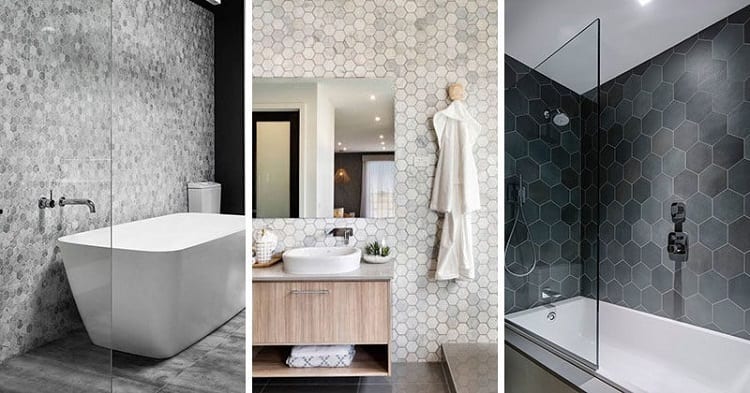
Generally, homes under 2,000 square feet typically have 93 feet of space dedicated for bathrooms, excluding the master bathroom, while homes about 3,000 square feet can have a dedicated bathroom space of 146 square feet.
Your bathroom can be as small as you want or as large as you wish for. It can have a shower or a bath tub or both — or neither.
The size of your bathroom depends on your needs, preference, the size of your house, and affordability.
Half Bathroom or Powder Rooms
A half bathroom may have a layout that is between 18 and 32 square feet.
The space is just about three feet wide and 6 or 8 feet long.
In older home, where space is at a premium, you may find an average bathroom size of 11 square feet.
This is probably the smallest bathroom that you may find in the house and will have just enough room for a single person to stand.
Also known as a powder room, these types of bathroom only has a sink and a toilet.
Most of the time, these powder rooms are located off the main living area and away from the bedrooms. As such, they are great for your daytime guests to use.
Three-Quarter Bathroom Size
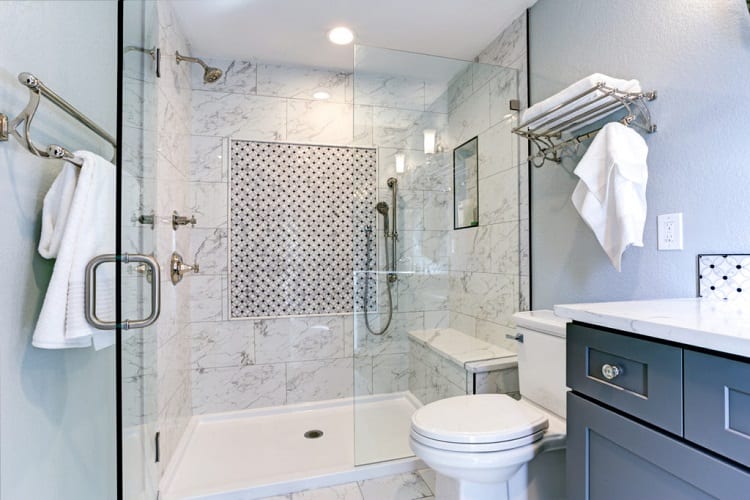
Another small bathroom configuration is either 6-by-6 feet or 5-by-7 feet.
This creates about 35-36 feet of space which is enough to meet the required space for a three-quarters bathroom.
This bathroom usually has a toilet, sink or vanity, and a shower.
Some people try to squeeze in a tub in this layout but this can make the bathroom impossibly cramped and impractical.
To make your bathroom seem more open, tuck the shower stall or your vanity in one corner of the bathroom.
Full Bathroom Size
A bathroom that consists of a toilet, a sink, a shower, and a bath tub is called a full bathroom.
Generally, the smallest full bathrooms run about 36 to 40 square feet big.
A 5-by-8 feet is the commonest dimension that you will find in a guest bathroom of this size.
Based on your bathing preference, you can have a shower and tub combo, to save space, or you can have them separately.
However, if you go with the latter choice, your bathroom may appear a bit cramped, so we recommend you choose bigger bathroom dimension if you want to have a bathtub and shower separately.
Full Bathroom with Separate Shower and Bathtub
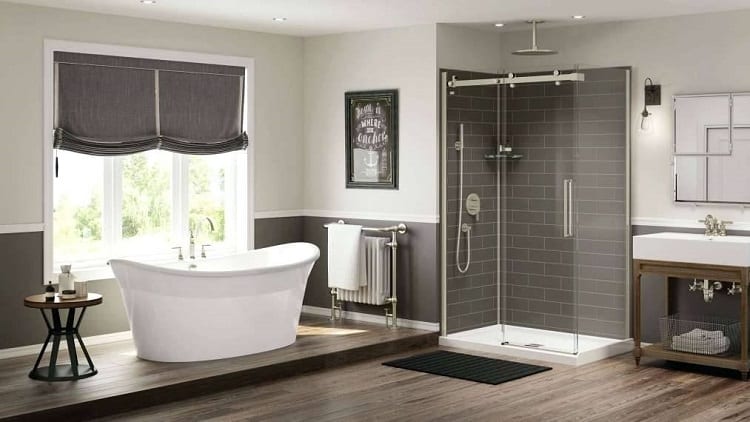
The ideal size of a small bathroom if you want a separate bathtub and shower is about 45 square feet with 5-by-9 feet dimensions.
This will prevent your bathroom from looking too cramped and will give you a bit of space in which you can dress or undress.
Additionally, to save more space, you should consider using a sliding door for your shower rather than a hinged swinging door.
Jack-and-Jill Style Bathroom
Jack-and-Jill style bathrooms are ensuite bathroom between two rooms.
They are usually meant for two siblings and run a bit larger since more room is required for clearance for the doors leading to the two bedrooms.
Because of this, about 3 more feet are added to the room’s dimension.
Since Jack-and-Jill bathroom is meant to be shared, they often have double-vanities, and as such, their size may range between 75 to 110 square feet.
Master Bathroom Size
A master bathroom is meant to be used by a couple and is the largest bathroom in the house.
This bathroom ranges from 115 to 210 square feet in new homes.
In older homes, master bathroom were much smaller, about the size of a Jack-and-Jill bathroom at 75 to 100 square feet.
Typically, a master bathroom consists of a toilet, a double vanity, a bathtub, and a separate shower stall.
Depending on the master bathroom size, owners can choose to add various other fixtures to the space as well.
Minimum ADA Bathroom Size
The minimum size for an ADA (Americans with Disabilities Act) compliant bathroom depends on the layout and the fixtures included. Here are some general guidelines:
Single-User Restroom
- The minimum size for a single-user restroom should be at least 30 inches by 48 inches of clear floor space. This space allows a single wheelchair to rotate freely, which is essential for ADA compliance.
- The door must not swing into the minimum required area for wheelchair accessibility.
Multiple-User Restroom
- For multiple-user restrooms, the ADA requires a clear floor space of at least 60 inches in diameter to allow a wheelchair to make a 180-degree turn.
- Each fixture, such as a toilet or sink, must also have specific clearances. For example, toilets require at least 56 inches from the back wall and 60 inches from the sidewall, allowing enough space for a wheelchair to be positioned next to the toilet.
Toilet Stalls
- ADA-compliant toilet stalls must be at least 60 inches wide and 59 inches deep.
- Ambulatory accessible stalls (for people who use crutches or walkers) should be at least 36 inches wide.
Sink and Accessories
- Sinks should have a knee clearance of 27 inches high, 30 inches wide, and 19 inches deep.
- Accessories like towel dispensers and hand dryers should be within reachable heights and operable with one hand without tight grasping, pinching, or twisting of the wrist.
Doorways and Entry
- Doorways must be at least 32 inches wide when the door is open 90 degrees to allow wheelchair access.
Consult the latest ADA Standards for Accessible Design or a professional with expertise in ADA compliance for precise requirements and measurements.
What is the Minimum Size for a Bathroom With a Shower?
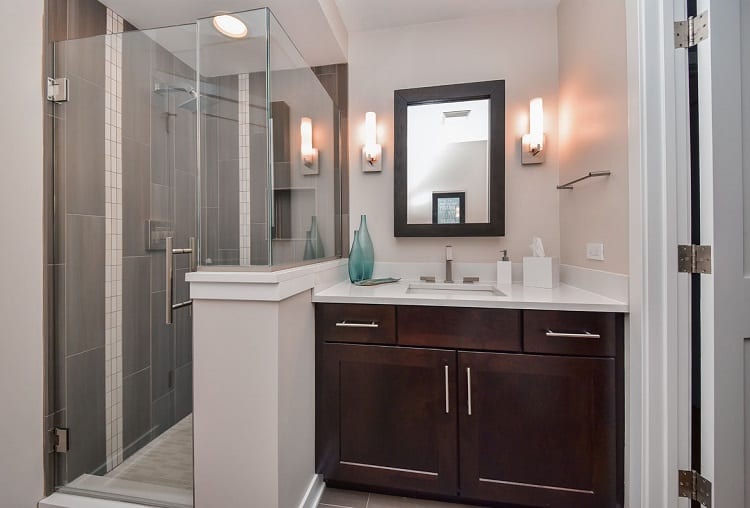
The minimum shower size is about 32 by 32 inches or 1,024 square inches.
However, experts recommend that you dedicate a space of about 36 by 36 inches if you want a shower installed, since it can be a very tight squeeze in a smaller space.
Additionally, 30 inches of clear space is recommended in front of the shower door so that a person can easily get in and out of the enclosure.
As such, a bathroom should at least be 36 square feet with dimensions of 6-by-6 feet to accommodate a shower, along with a sink and toilet.
In some cases, a bathroom with dimensions of 6.5-by-5.5 feet may also accommodate a shower if it used as a corner fixture.
How Do You Fit Out a Small Bathroom?
If you have a tiny bathroom and you need to fit in all fixtures in it, it can be like playing a game of a giant crossword puzzle.
You need to take into account everything like the minimum size of the toilet and sink, the clearance for the shower door, and the space for hanging your towels and toilet paper.
However, there are a lot of layouts that can help you maximize your super-small bathroom space.
Skip the Shower Door
If you bathroom is 5 feet wide, that’s just enough to accommodate a toilet, sink, and a shower.
Since it will be a tight squeeze, you will need to skip the swinging shower door.
Instead, you can use a sliding glass panel or simply a shower curtain to keep the water in the shower.
Install a Corner Sink
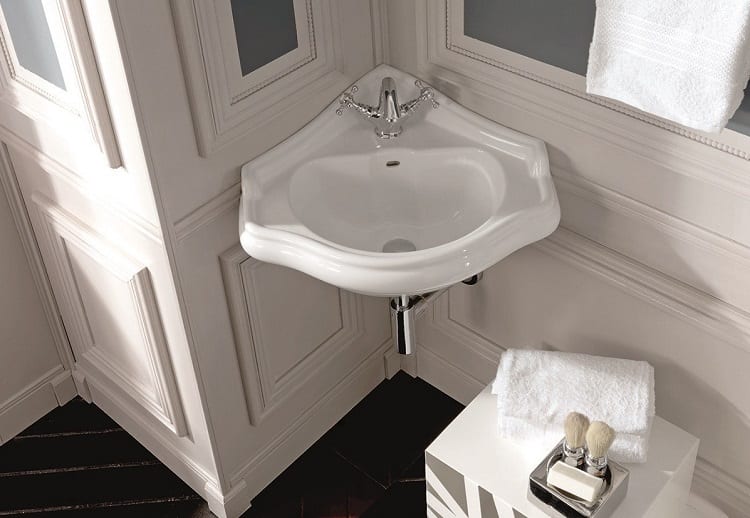
In a tiny bathroom, a sink can disrupt your only path to the door.
If this is the case, try placing your sink across from the toilet, rather than across from the shower.
That’s because if your shower has a swinging door, it can reduce the amount of clear space available in the bathroom.
Rounded and Floating Vanity
For smaller bathrooms, it is a good idea to float your vanity off the floor.
Not just does it make your bathroom look less cluttered, it also clears up some space where you can store little items. Additionally, look for a vanity with rounded edges.
This not just occupies less area, it will also not have jutting corners, which can be a risk for bruised hips.
Install a Trough Sink
Trough sinks are minimalistic, narrow sinks that have a low profile.
Wall-mounted trough sinks, like floating vanities, not only free up foot space, you can also use the space to store small items.
Use Wall-Mounted Faucets
To free up even more space, you can mount your faucets in the walls.
This allows you to install even narrower sinks or vanities, which will make even more clear space in the bathroom.
Wall-mounted faucets in traditional designs look particularly cool.
Extend the Counter over the Toilet
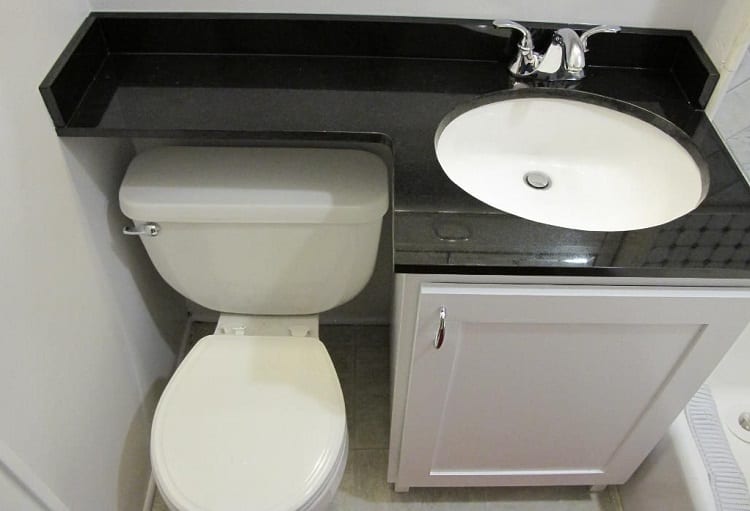
If you have a bathroom with the vanity and toilet next to each other, extending your counter to go over the toilet is a great idea.
This will free up a bit of space so that you can place your toiletries there, and if you use wood or stone, the layout looks super modern, minimal, and chic.
Since the height of your counter can range from 32 to 36 inches, you need to consider whether your toilet can easily fit under it and you can lift up its lift without hitting the extended counter.
Install Small Soaking Tubs
If your bathroom looks cramped with the traditional-sized tubs, try a smaller Japanese-style soaking tub.
These tubs are deeper but shorter, so there is a bit of space left that you can use to store items, or create a shower seat, or a shelf.
Mount Towel Bar on the Door
If mounting a towel bar on your bathroom wall obstructs the flow of traffic, you can mount a small towel bar on your door.
You can store the rest of your towels somewhere else but having one towel in the bathroom is necessary.
Expand the Mirror
Another good idea is to expand your bathroom mirror across the wall instead of just above the vanity.
This will allow tow people to use the mirror at one time and also make your bathroom appear bigger.
Wrapping Up
No matter what bathroom size or how many bathrooms you have, a simple change in their layout can make a big difference.
If you want your small bathroom to be more comfortable, less cluttered, and uniquely beautiful, these layout tips can help you design that kind of space.
